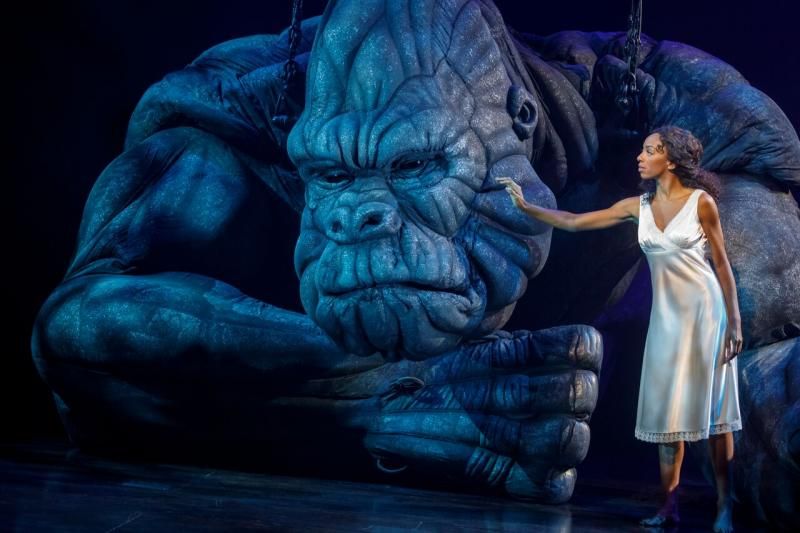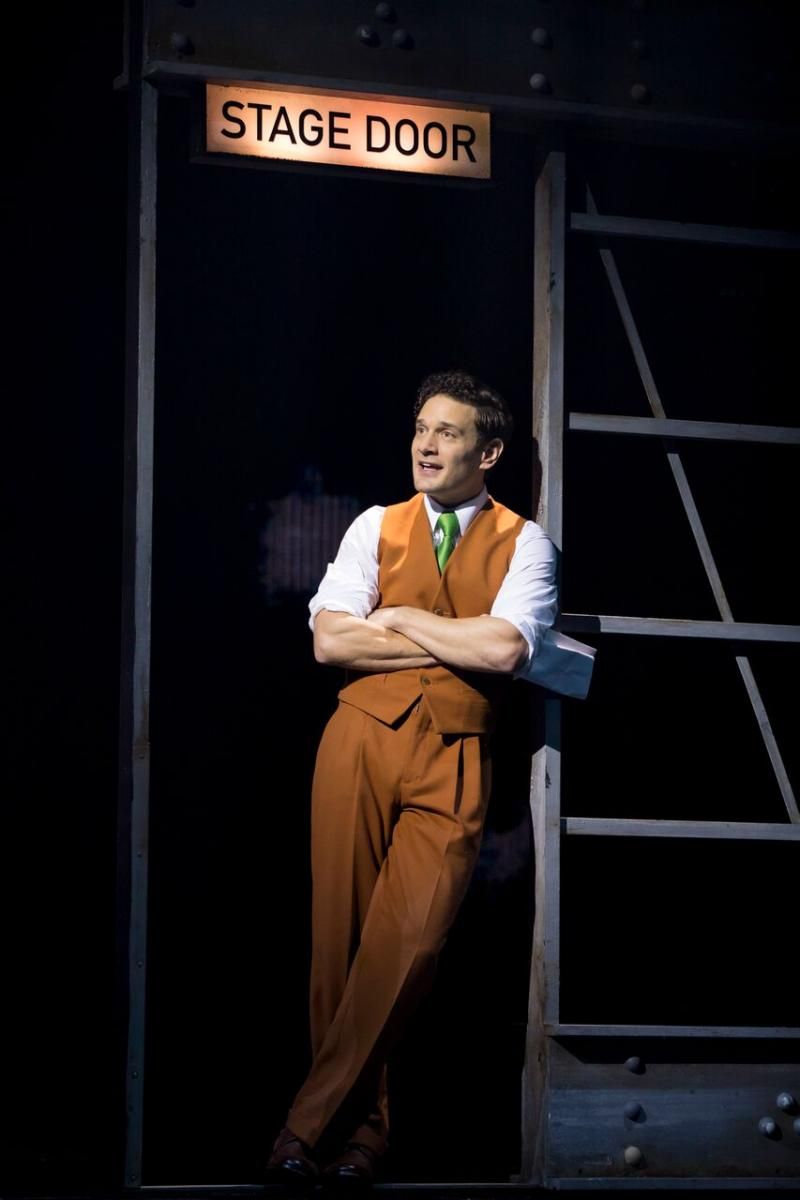Review: KING KONG: It Was Inept Writing Killed The Musical
Using Merian C. Cooper and Ernest B. Schoedsack's 1933 cinema classic "King Kong" as the inspiration for a musical theatre piece really isn't such a bad idea. Among the film's notable achievements is the extraordinary dramatic underscoring, composed by Max Steiner, that supplied the title character's tragic death plunge from atop the Empire State Building with the kind of heartbreaking emotion that would make any operatic tenor jealous.

But don't expect the music, nor the book nor the lyrics for that matter, of the ineptly pieced-together musical that just limped onto Broadway by way of Australia to summon up anything resembling an honest emotion. There are those who say the movie adventure about an ambitious film director who kidnaps a giant ape from his island home and displays him in chains in front of an audience of Manhattan swells is symbolic of America's slave trade. King Kong the musical is symbolic of little more than the foolhardiness of putting stage spectacle above good writing.
Of course, little of the pre-opening buzz surrounding the venture (which is officially billed as being based on the novelization of the film's screenplay, published in advance of its premiere) has had anything to do with what fills the blank pages. Pushed as the star attraction of director/choreographer Drew McOnie's debut Broadway production is the 20-foot-tall, 2000 lb. combination of puppetry and animatronics designed by Sonny Tilders, controlled both remotely and by a visible team of manipulators. Kong's growls, grunts and roars are voiced live by Jon Hoche through Peter Hylenski's sound design.
It's an impressive creation for sure, with the ability to perform natural-looking movements and emote a variety of facial expressions, but Jack Thorne's book requires Kong to accomplish feats that may go beyond Tilders' creation's capabilities. So when Kong does battle against a giant attacking cobra, the fighting mostly takes place off-stage with the final strangulation only seen in shadows.
As soon as Kong breaks free from one of his chains during his New York premiere, the curtain is lowered in front of him and the moment is played for laughs as nervous chorus dancers attempt to perform while hearing his roars on the other side. When Kong finally takes to the streets of New York, the only damage he causes appears to be a few buildings crumbling due to the vibrations of his pounding the pavement. No humans are ever seen harmed by what appears to be a 20-foot-tall, 2000 lb. pacifist.
His best moments come while jogging in place, as designers Peter England (sets/projections) and Peter Mumford (lights) create the impression that he's running.
England and Mumford are the real stars of the show, beginning with their striking image of the 1930s Manhattan skyline growing upward (think Fritz Lang's "Metropolis"), a remarkable effect that makes the actors appear to be on a cruising ship and an ominous view of Kong's dark and mysterious home, Skull Island. And it's England, not Kong, who puts in the most effort when it comes time to climb up the Empire State.

(Photo: Joan Marcus)
Though loaded with flat, stilted dialogue, the biggest mistake of Thorne's book is to take away the tragic aspects of the film's two main characters, sapping them of empathy. The earnest and honest filmmaker Carl Denham is now a heartless villain who cons people with promises of fame and wealth. Ann Darrow, the role that made Fay Wray a star, is no longer fighting to survive the Depression -- stealing food to keep from fainting from hunger -- and willing to join Denham on his film shoot out of desperation. Now she's a young hopeful coming to New York with dreams of stardom and thinking this gig might be her big break. Unlike Wray, who screamed in terror for half the picture, this Ann reacts to the beast's roars by roaring right back at him and trying to relate on a deeper level. ("Anyone ever tell you you've got sad eyes?") Scenes between the two of them seem to go on forever as she voices her interpretation of every move and sound that Kong makes.
Eric William Morris and Christiani Pitts are both talented actor/singers who do what they can with their leading roles, but when singing lyrics like "I'm gonna put wonder on the stage / Folks'll pay a fortune when he shakes his cage" or "You're thinking 'bout Kong / Wrong, think about the money / You're standing in the land of milk and honey," it's an uphill climb.
Thorne eliminates the natives of Skull Island, which is a good idea, but then there's no explanation as to why Denham starts calling the creature Kong. Another good move is the axing of Ann's superfluous love interest, but by the end of the show she seems to be falling in love with the giant ape, hopping on his back as he races through the city and spending quality time atop the skyscraper making plans for the two of them to go back to the island to live their lives together.
A new character, Denham's assistant Lumpy (Erik Lochtefeld), has a big scene in the second act with the sole purpose of voicing the opinion that Ann is a hero for young girls to look up to.
Composer Marius de Vries supplies the scoring that enhances scenes while Eddie Perfect contributes a power-ballad heavy collection of songs with lyrics that narrate emotions rather than express them. He also has the population of 1930s Manhattan singing industrial techno-rock, allowing McOnie to display his talent for blending contemporary hip-hop with 1980s club scene choreography.
Reader Reviews
Powered by
|
Videos

